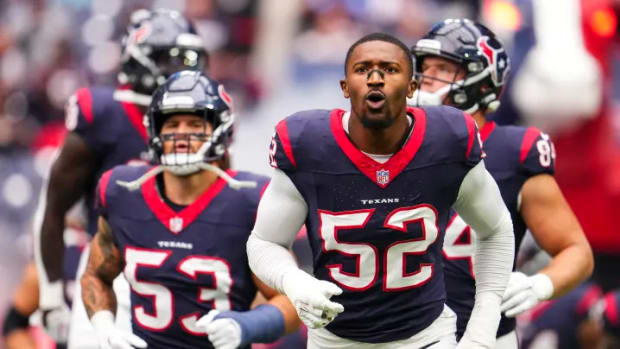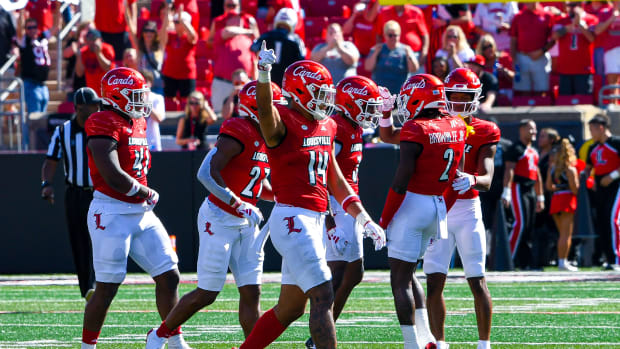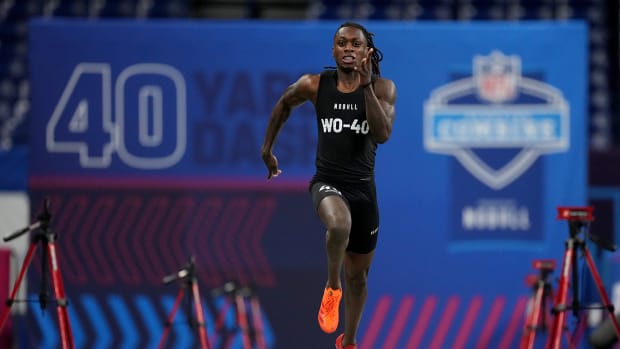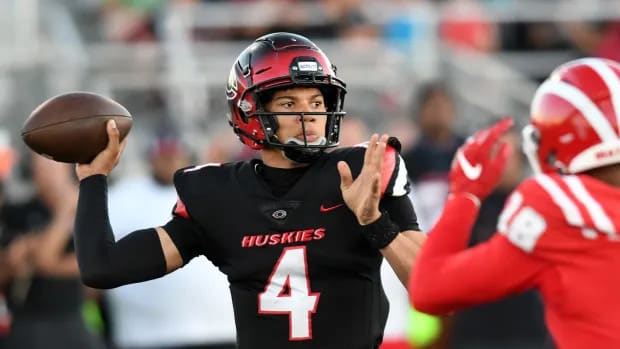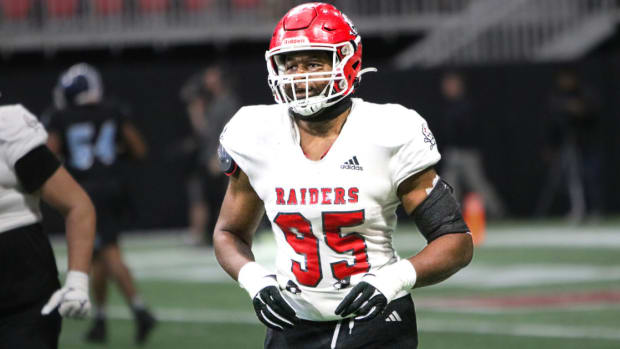Louisville's spread offense incorporates different philosophies
Scott Satterfield wants his offense ahead of the curve.
When he was the quarterbacks, running backs and receivers coach at Appalachian State from 1998 to 2008, Satterfield learned the principles of the spread offense. The Louisville football head coach shared some of his thoughts on the evolution of the spread offense on the Pat McAfee Show May 5, a scheme that began to gain widespread popularity in the late 2000s.
In his first season as the program’s head coach, Satterfield’s offense had plenty of success at Louisville. With quarterbacks taking snaps in the pistol, Louisville emphasized the rushing game with outside zone and stretch running plays.
The Cardinals averaged 213.2 rushing yards per game and Javian Hawkins finished with 1,525 rushing yards and nine touchdowns.
Louisville’s spread offense is able to run the ball by incorporating what other offenses are doings.
“You look at what the Ravens are doing, they are able to run their quarterback, we’re doing a little bit of that,” Satterfield said. “You look at what the Titans are doing with the way they can run their running back with Derrick Henry this past year, you look at the San Francisco 49ers with the play action game off the outside zone is tremendous.”
Louisville wasn’t shy about its intention of running the ball in 2019, finishing with 200 or more yards in eight games. Hawkins rushed for 233 yards and Louisville finished with 370 yards on the ground in a victory over Syracuse in November.
Hawkins wasn’t the only active member of Louisville’s rushing attack that surpassed 2,800 yards in the eight-win season. Quarterback Micale Cunningham rushed for 482 yards while running back Hassan Hall reach 501 yards on the ground.
Satterfield thinks Louisville’s offense is unique in its ability to emphasize a running game while maintaining spread principles.
“I feel like we are a little bit on the front end of the curve with what we are doing. We are not just an offset back running a zone read, we have a lot of different things we are doing with that,” Satterfield said. “I think that helped us.”
